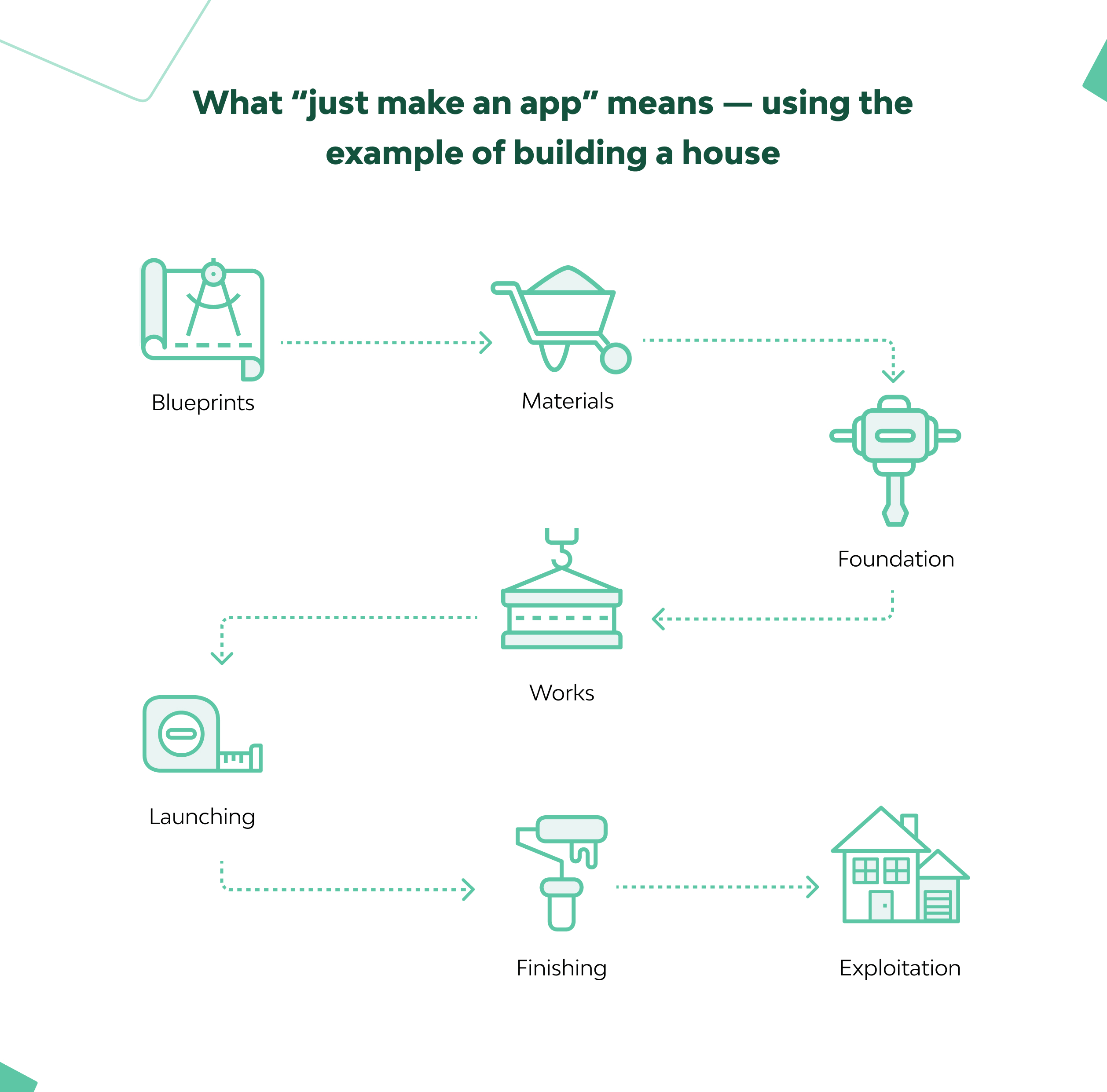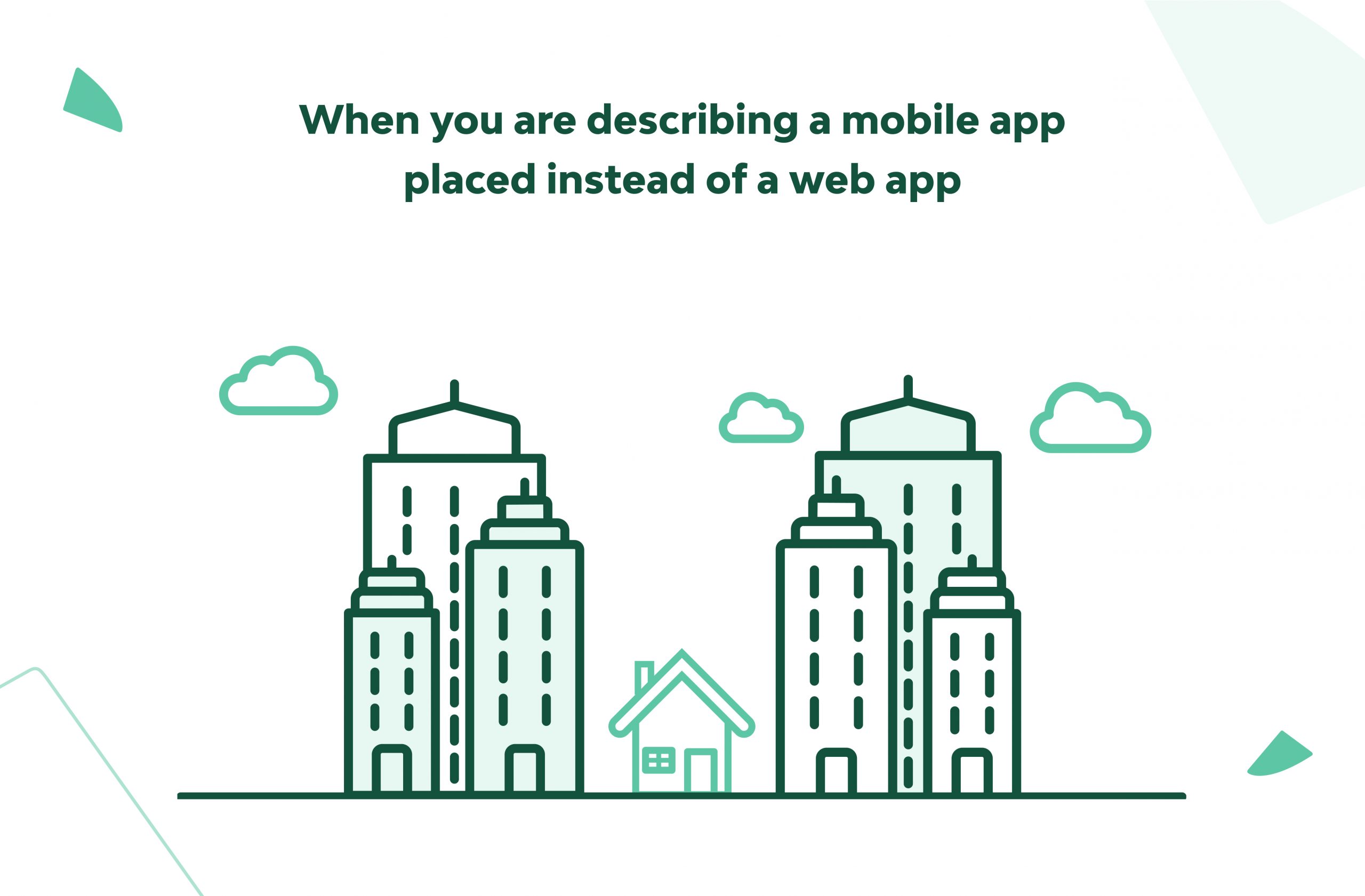Software Development Process as House Building

Is it easy to create something in a virtual world? Well, it doesn’t require carrying heavy bricks here. But not everyone who tried is happy with the result. Why? Perhaps, it’s because not everyone is clear about the result they expect. Furthermore, the whole process is also surrounded by myths. As a result, there is often much chaos in business communication with developers.
Meanwhile, digitalization is becoming a must-have for any business to survive. Few can afford not to care about these things. So why not delve into this topic, replacing abstractions with convenient examples? How about using construction as an analogy? Let’s look at software development as house building.
Why Software Development is Compared to Building a House
Comparing building software versus building a house highlights the unique challenges and intricacies of each process. While constructing a house involves physical materials and well-defined stages, software development navigates intangible code and continuous iteration, reflecting the dynamic nature of technology.
Building software is like building a house — many processes are almost the same. Let’s compare them.
The first stage of software development and house building is planning. Homeowners and software sponsors have similar desires: to get a high-quality product that will be popular among a target audience. Careful planning is crucial. However, the digital market is more flexible and volatile than real estate, so all decisions must be made much faster.
The design stage is almost the same as creating software or building a house. Designers must create a convenient and durable project to provide a positive user experience. Standard projects like typical townhouses or single-purpose mobile apps will cost much less than unique mansions and one-of-a-kind full-fledged applications made from scratch. Creating a prototype is crucial at this stage because it helps understand the final product’s appearance.
Sure, there are differences between software development and house building. For example, creating a house must have a fully designed project from the very beginning. It cannot be easily changed during construction. On the other hand, software developers can start creating an app with only a general idea and the most important features and do all the rest along the way.
Building processes are also very similar. Workers first pour the foundation at the construction site, pave necessary communications, and install walls and floors. Software is also developed by a particular algorithm. You just can’t build walls if there is no foundation. Every part of the developing process has its own order. Each process is performed by an expert: a carpenter makes the roof, and a cloud architect designs and provides cloud services for a platform.
In the end, it’s time for testing. Creating something as complicated as a house or a mobile app is impossible without failures and mistakes. Careful testing and inspection help find and correct mistakes so a customer gets a high-quality product with a pleasing user experience.
What Hides Behind Words
The company I run is a software vendor. And it seems that everyone who reads this collocation has their own idea of what we actually do. That’s why I hope the overview below will be useful. But to start with, it’s worth mentioning that confusion often arises even with the terminology used in the industry.
For instance, if somebody comes to us for software consultancy with the idea of ”creating a web application,” it makes sense to double-check the incoming information. It really happens that a founder says “web application,” meaning a product that customers will install on smartphones for use. Such mistakes sometimes cost time and money.
How can we describe this case using the proposed analogy? Let’s imagine that you are preparing a project for a hotel. Even without going into details yet, you obviously need to begin with defining a place where to put it. Because a bungalow that you would like to put on the seashore clearly differs from a hotel in the center of a city — they are two completely different buildings, meeting the infrastructure, construction principles, and visitors’ expectations. That’s how important is the purpose the product is designed for.
Perhaps you are interested in hotel management software development? Contact us for further advice.
Building vs. Buying Software Solution
If we’re speaking the language of benefits, what’s better: building software from scratch or buying a ready-to-use solution? Let’s find out the main pros and cons of both options.
The pros of buying a software solution
- Lower price. Buying software is a perfect way to start with minimal budgets. The average cost of their implementation differs from custom solutions 3-10 times.
- Fast adoption. Out-of-the-box solutions are ready to use after a short period of implementation and configuration. Simple applications may be run in days, and more complex projects in weeks. Buying a house is always faster than building it.
The cons of pre-made software solutions
- Low customizability. Existing solutions limit the project. Developing new features became a real pain in the neck. You can’t change or update an application by yourself. In most cases, ready-to-use solutions lack flexibility and poorly adapt to market-changing conditions. So, you just can’t add a new room to a flat you’ve bought, but it’s possible if you’re building a house.
- Compatibility issues. If you use different pre-made software solutions, you will almost inevitably have compatibility problems because they are built with various technologies. Some of them can be solved, but others can’t.
The pros of building a custom software solution
- Exact match with the requirements. When designing software from scratch, you get precisely what you need. Every feature is well tested and analyzed, managers and programmers try to create a perfect user experience, and the entire project fully suits the market it’s created for. This level of accuracy is impossible when using pre-made solutions.
- High scalability. Custom software is well-designed when it is utterly scalable. If your business grows fast, you can deal with all the challenges by adding more computing resources. For comparison, most pre-made have limited scalability. And they may not be ready if your business goes sky-high.
- Faster growth. Custom software usually better satisfies the demands of the target audience. Compared with out-of-the-box solutions, carefully designed applications grow better and generate more profit in most cases.
The cons of building a custom software solution
- High price. Developing software from scratch can’t be cheap at the development stage. It can be strategically more beneficial, but you need high budgets to create and launch a platform or an app.
- Long developing time. Creating software is like building a house — you can’t do it in haste. Even the most experienced team needs a month or two to develop a single-purpose app. A complex, full-fledged project may take half a year or even more. For example, one of the most complicated Django Stars’s project took 16 months to launch.
Out-of-the-box software solutions are the correct choice when a company needs an app or a platform as quickly as possible and for a low price. But if you think strategically, in most cases, it’s better to invest in a custom solution that perfectly matches all the requirements and needs of a company and its clients.
What’s in this for You?
These articles should come in handy if you are a fledgling startup or a business looking to open a new online direction. Or if you are a liaison between your company and vendor. With a clear understanding of the issues above, you can be on the same page with the developers and better represent your interests. This will ensure a better calculation of what is happening with the money directed towards the software development processes. Also, it will help to inform investors about the timing competently.
Of course, the suggested analogy is not always entirely consistent. Say, you hardly need bricks and mortar. For example, one of the nice things about online projects is that it’s easier to test and scale them, making iterations. But it’s helpful to rely on common sense here as elsewhere in business. In other words, those who take into account how each decision impacts the building stability as a whole know more about the difference between an air-castle and a successful project.
- How does the software development process compare to building a house?
- The main stages of building a house and developing software are similar. For example, the planning stages are almost identical — only tools differ. Building a house is a step-by-step process as designing an app. You can’t build windows without walls, and you can’t add a payment feature if you haven’t added any databases.
- Is there a direct correlation between software development stages and house building?
- There is no direct correlation, but many matches and coincidences exist between building a house and developing software. For example, planning and prototyping processes are almost identical, but testing and inspecting differ significantly.
- What are the challenges faced in software development, as opposed to house building?
- The software market is much more flexible and volatile than real estate. New programming technologies appear every year, so software developers must consider not only the market needs and desires of target audiences but also possible technology changes.












